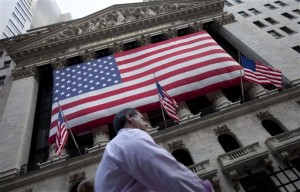Credit rater Standard & Poor’s (S&P) has tagged the Philippines as the world’s strongest major emerging market, citing its buffers that would insulate the economy from external shocks.
In a report this week, S&P said Asian economies in general were more resilient to adverse global trends than Latin American counterparts. Countries in the region are expected to fare well in the face of a slowdown in China, Asia’s biggest economy.
“Latin American sovereigns are, on average, more vulnerable than sovereigns in Asia,” S&P said.
The Philippines will be the least affected by worsening global conditions among all countries covered by the S&P report.
The least-vulnerable sovereigns in S&P’s ranking are the Philippines, Poland and Mexico, followed by Pakistan and Hungary. These countries have low direct economic ties to China, low risk of domestic financial leverage, and are only moderately vulnerable to higher global interest rates.
Key risks to emerging markets, S&P said, are the tightening of global liquidity conditions as a result of the US Federal Reserve’s awaited rate hike, unwinding of high levels of debt built up during years of loose monetary conditions, and China’s slowdown.
S&P said it ranked each emerging market’s overall vulnerability by using a simple average of its ranking on each of the three different measures of risk, from 1 (most vulnerable) to 22 (least vulnerable).
To arrive at each risk score, the credit rater used a number of economic variables. For instance, the measure a country’s vulnerability to the Fed’s rate hike, S&P looked at indicators such as foreign debt stock, levels of short-term debt, and external financing needs relative to an economy’s steady dollar income streams.
Venezuela, Argentina, Turkey, Colombia and Peru are the emerging market sovereigns that may be the most vulnerable currently to the combined effect of the three key risks of tightening global liquidity, financial deleveraging and a Chinese slowdown
The Philippines was the least vulnerable economy to the Fed’s rate hike, the fourth-least vulnerable to deleveraging, and fifth-least to a slowing China.
S&P noted that the Philippines’ exports to China accounted for less than two-tenths of gross domestic product (GDP). Trade between China and the Philippines likewise declined 0.86 percent since 2013.


